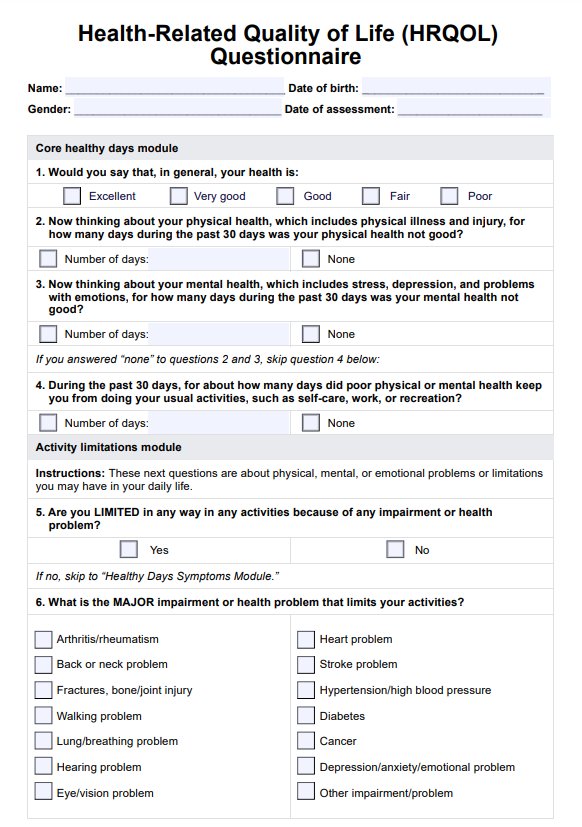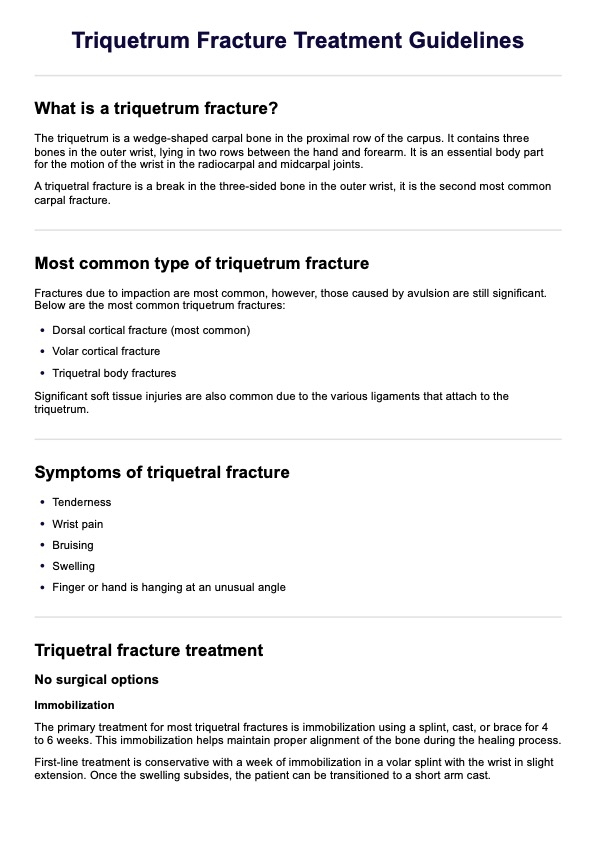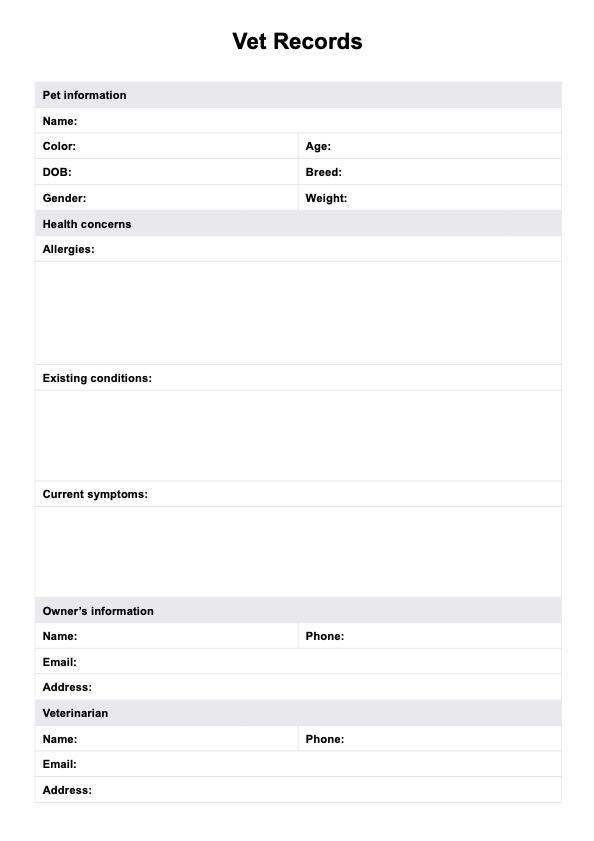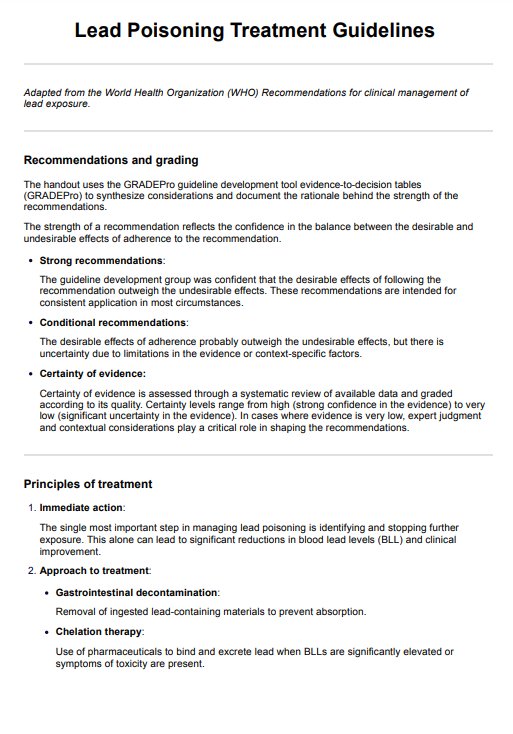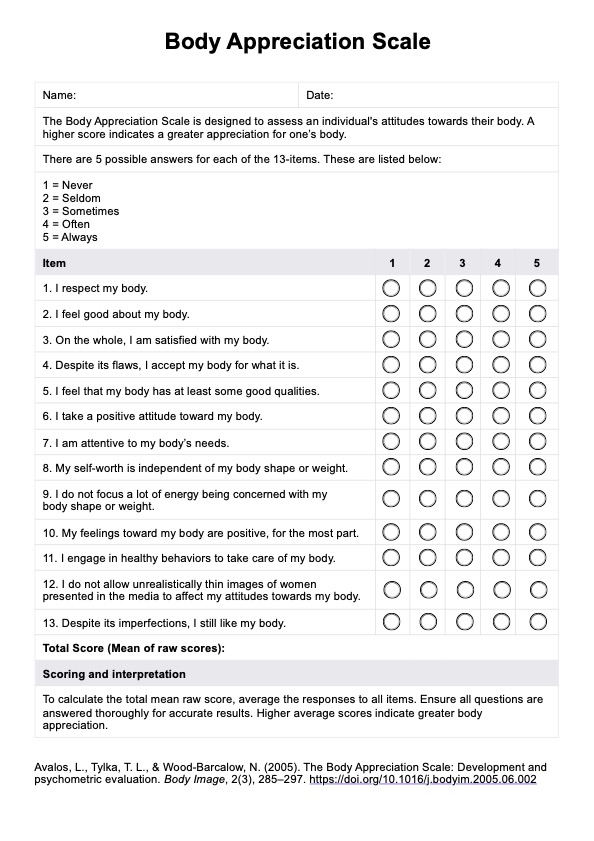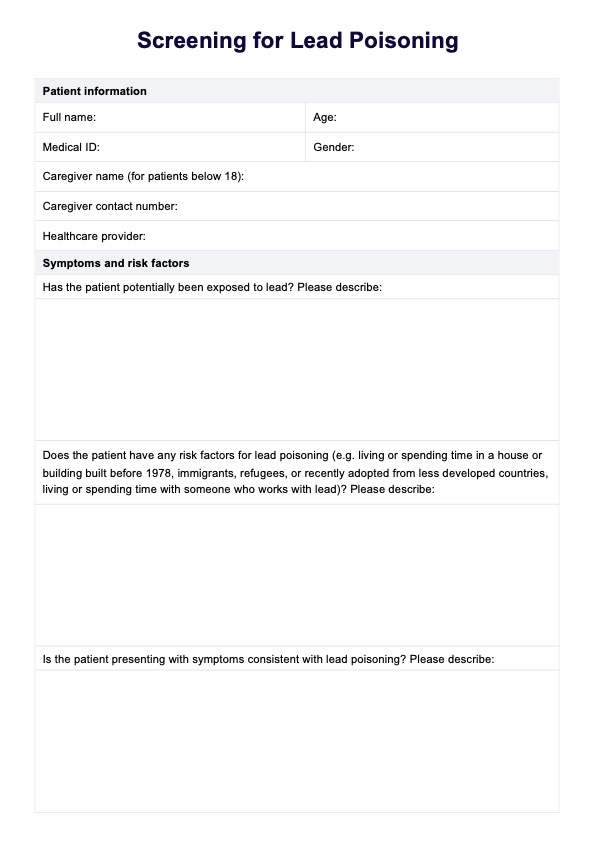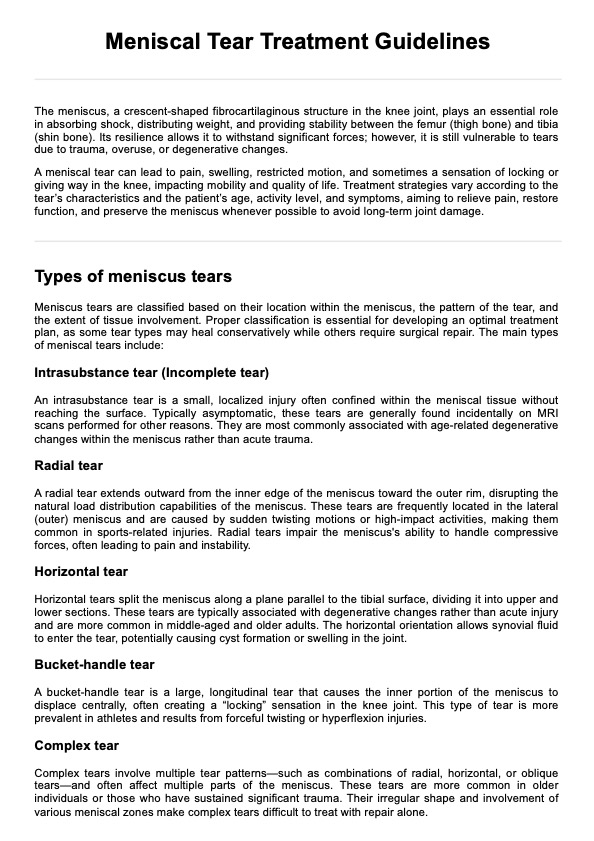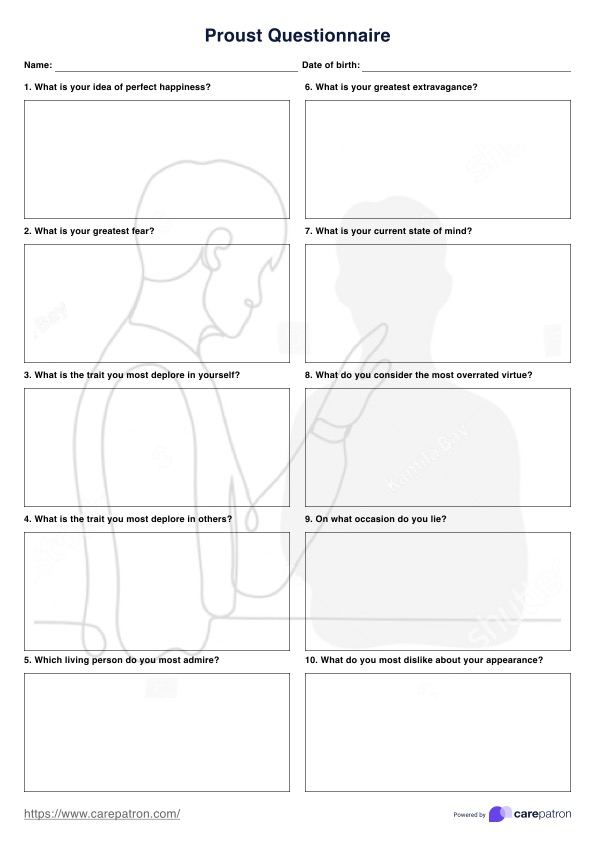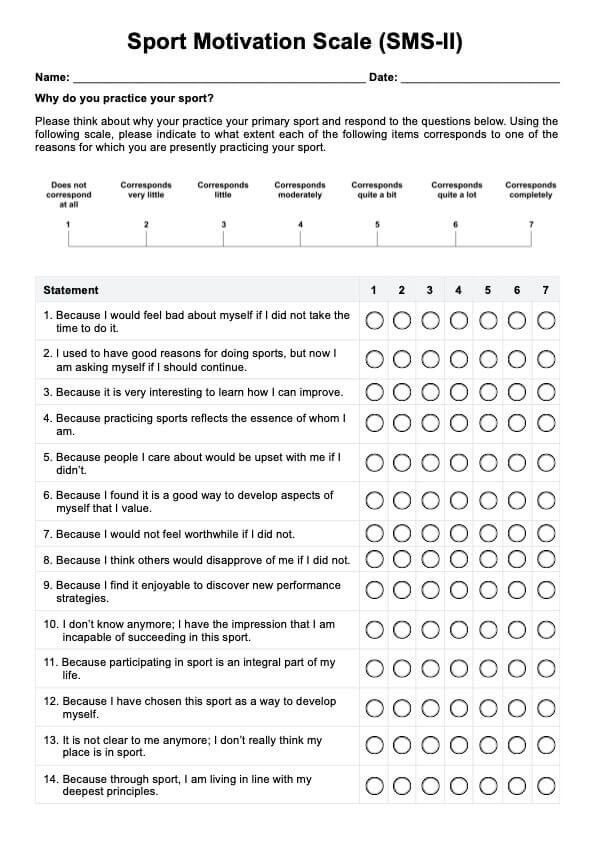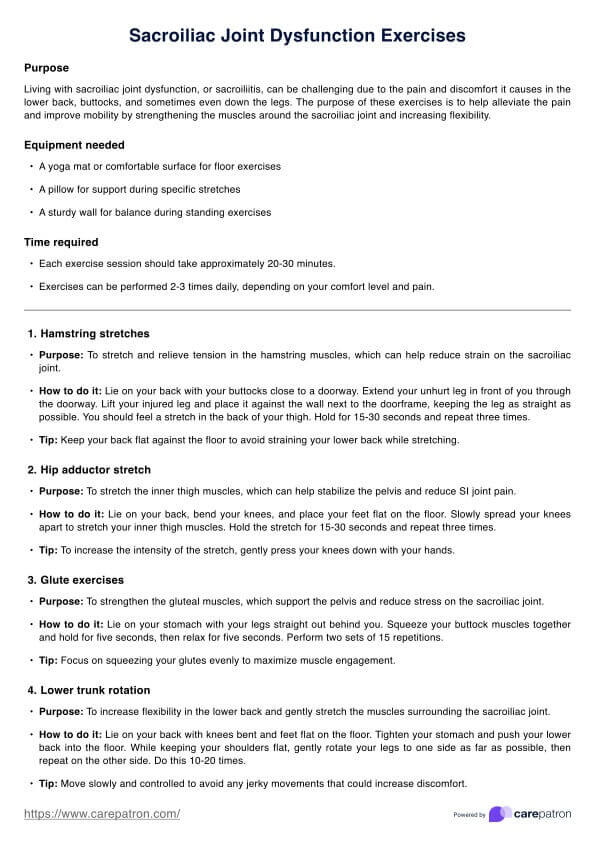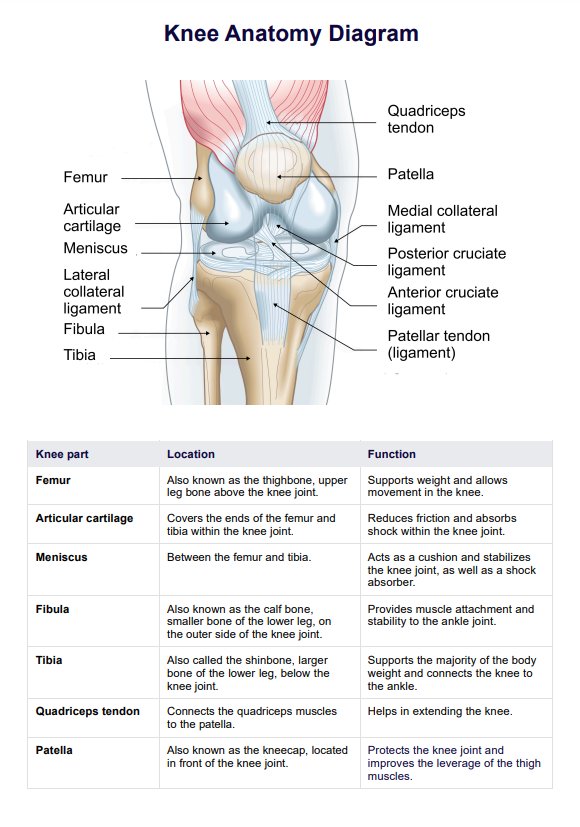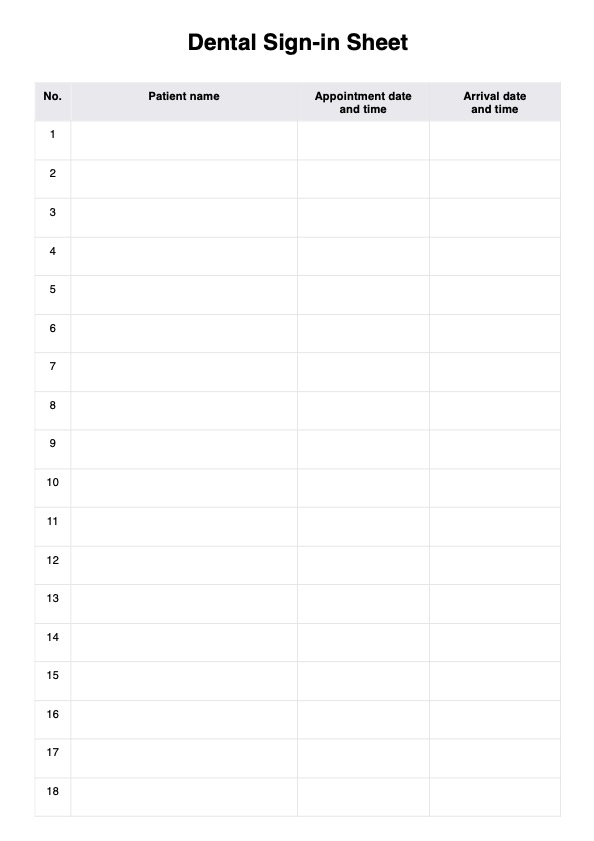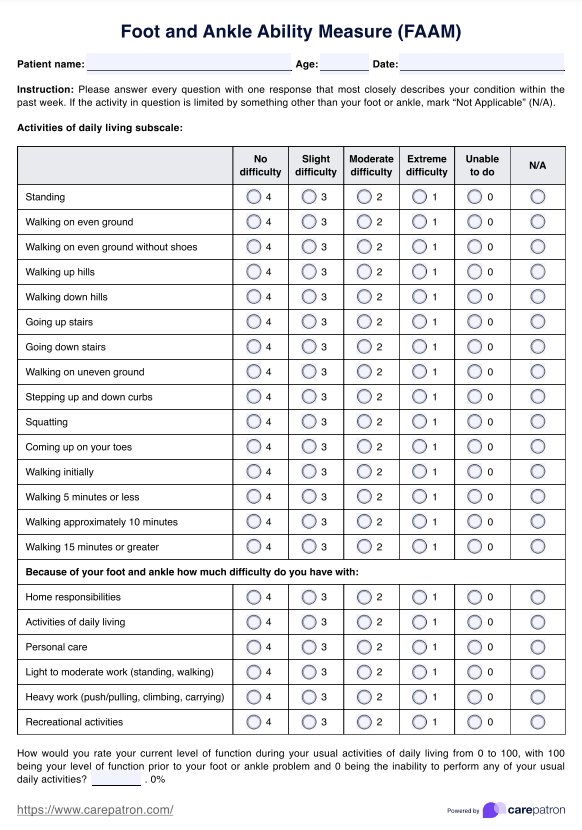Cremasteric Reflex
Streamline evaluations and ensure accurate data collection in your clinical assessments with our Cremasteric Reflex Test template. Learn more in our guide!


What is the Cremasteric Reflex?
The Cremasteric Reflex is a superficial reflex observed in males, assessing the function of the cremaster muscle and the cremaster reflex, which is innervated by the genitofemoral nerve (L1, L2). The cremaster reflex is a physiologic superficial reflex elicited by stroking the inner thigh, causing the cremaster muscle to contract and pull the scrotum and testis upwards on the stimulated side (Mellick et al., 2021). This reflex is often used to evaluate the integrity of the spinal cord at the L1-L2 level and to diagnose potential neurological issues.
In females, the equivalent response is called the Geigel reflex, which involves the contraction of muscle fibers above the superior border of the inguinal ligament. Although it is more commonly tested in males, understanding the Cremasteric Reflex is crucial for diagnosing conditions such as testicular torsion, where the reflex might be absent, or in cases of recent abdominal surgery or scrotal pain, which can affect the reflex’s reliability (Mellick et al., 2021).
How to check for the Cremasteric Reflex?
To check for the Cremasteric Reflex:
- Position the patient in a comfortable supine position with their legs slightly apart to allow easy access to the medial part of the thigh.
- Using a blunt instrument, such as the handle of a reflex hammer or the edge of a tongue depressor, gently stroke the medial part of the thigh in a downward direction.
The normal response in males is the contraction of the cremasteric muscle, resulting in the elevation of the scrotum and testis on the side being tested. This response is due to the innervation by the sensory fibers and motor fibers of the genitofemoral nerve, which originates from the L1 and L2 spinal nerve nuclei.
When conducting the test, it is essential to note that children might show an exaggerated response. At the same time, recent abdominal surgery, scrotal pain, and testicular torsion can impair the reliability of the findings. The reflex is graded as either present or absent, and its absence could indicate upper motor neuron (UMN) or lower motor neuron (LMN) lesions. Accurate observation and recording are crucial for proper diagnosis and subsequent treatment.
Cremasteric Reflex
Cremasteric Reflex
How does our Cremasteric Reflex template work?
Our Cremasteric Reflex template is designed to streamline the process of evaluating the Cremasteric Reflex in a clinical setting. Follow these steps to use the template effectively:
Step 1: Download the template
Start by downloading the Cremasteric Reflex template from our resources. Ensure you have all necessary equipment, such as a reflex hammer or a tongue depressor.
Step 2: Prepare the patient
Position the patient comfortably in a supine position with their legs slightly apart to allow easy access to the medial part of the thigh.
Step 3: Conduct the test
Using a blunt instrument, gently stroke the medial part of the thigh in a downward direction. The medial cremaster muscle, which can originate from the pubic tubercle or sometimes from the lateral pubic crest, is involved in this reflex. Observe the response on the same side being tested.
Step 4: Record the results
Document whether the reflex is pressed downward on the left and right sides. Note any exaggerated responses, especially in children, or any absence of the reflex, which could indicate UMN or LMN lesions.
Step 5: Analyze and interpret
Consider recent abdominal surgery, scrotal pain, or testicular torsion, which may impair the reliability of the findings. The evaluation of the Cremasteric Reflex is crucial in cases of acute scrotal pain to assess for evidence of testicular torsion. Use the recorded data to inform further diagnostic steps.
Cremasteric Reflex Test results, interpretation, and next steps
The results of the Cremasteric Reflex Test are recorded as either present or absent for both the left and right sides. A normal response involves the contraction of the cremasteric muscle, elevating the scrotum, and testing the testis on the side. An absent reflex may indicate upper motor neuron (UMN) or lower motor neuron (LMN) lesions, requiring further neurological evaluation (Mellick et al., 2021)
If the reflex is absent, it is crucial to consider the patient's history and any factors affecting the test's reliability, such as recent abdominal surgery, scrotal pain, or testicular torsion. Further diagnostic steps may include imaging studies or referral to a specialist for comprehensive evaluation and management of the underlying condition.
Benefits of using our template
Our Cremasteric Reflex Test template simplifies the evaluation process and ensures accurate data collection. Here are three key benefits:
Standardization
Our template provides a consistent structure for conducting the Cremasteric Reflex Test, ensuring that all necessary steps are followed and recorded accurately. This standardization minimizes errors and enhances the reliability of the results, making it easier to compare and track patient responses over time.
Efficiency
By having a pre-designed template, healthcare professionals can save time when setting up and administering the test. The template includes all essential fields and guidelines, streamlining the process and allowing for more efficient testing sessions. This efficiency enables more patients to be tested in less time, maximizing productivity.
Comprehensive documentation
The template ensures comprehensive documentation of patient data, test conditions, and results. This thorough record-keeping facilitates better analysis and follow-up, allowing for more effective patient progress and outcomes monitoring. Accurate documentation also aids in developing tailored treatment plans to address specific neurological conditions.
Reference
Mellick, L. B., Mowery, M. L., & Al-Dhahir, M. A. (2021). Cremasteric reflex. PubMed; StatPearls Publishing. https://www.ncbi.nlm.nih.gov/books/NBK513348/
Commonly asked questions
The Cremasteric Reflex Test evaluates the function and integrity of the cremasteric muscle and the genitofemoral nerve (L1, L2).
The test is performed by stroking the medial part of the thigh downward with a blunt instrument and observing the elevation of the scrotum and testis in males.
An absent reflex may indicate upper motor neuron (UMN) or lower motor neuron (LMN) lesions, requiring further neurological evaluation.
The cremaster muscle, part of the spermatic cord, contracts during the Cremasteric Reflex, elevating the testis. This reflex helps protect and regulate the testicles' temperature.
The sensory and motor fibers of the genitofemoral nerve, originating from the L1 and L2 spinal nerve nuclei, are involved in the Cremasteric Reflex. These fibers form the reflex arc that leads to the contraction of the cremaster muscle and the elevation of the ipsilateral testicle.














